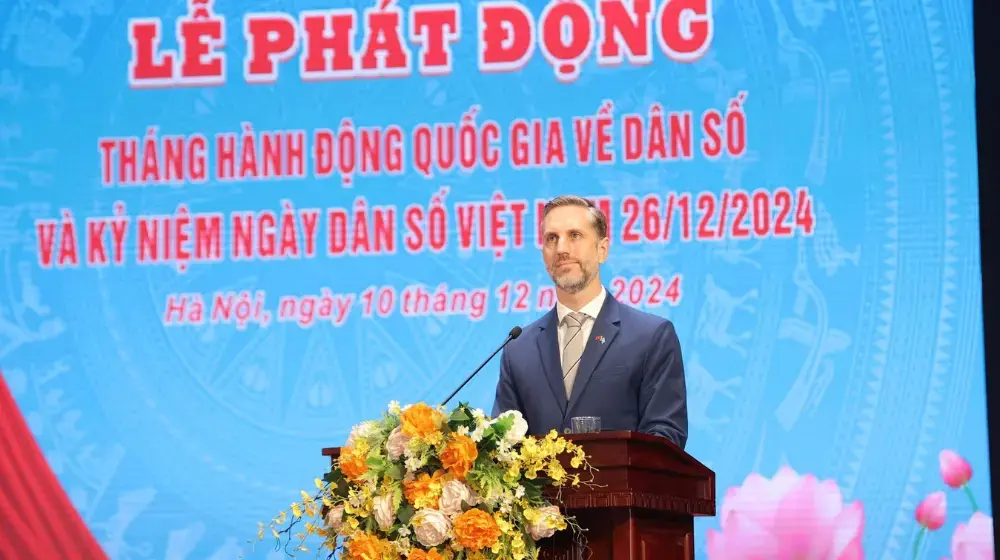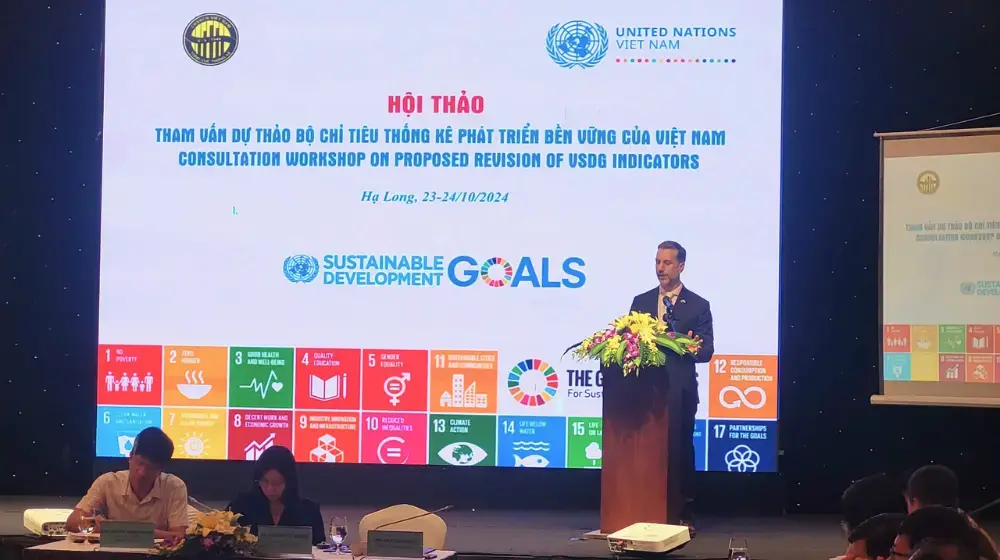Dr. Bui Tat Thang, President of Viet Nam Development Strategy Institute (DSI);
Representatives from the MPI, GSO, other line ministries, and research institutes;
Representatives from international organizations and UN colleagues;
Ladies and gentlemen,
A very good morning to you all;
On behalf of the United Nations Population Fund (UNFPA) in Viet Nam, I would like to thank the Viet Nam Development Strategy Institute (DSI) for organising this important workshop. This workshop provides a great opportunity for all of us to share and discuss on population issues and its impacts on sustainable development. It is also an important step in process of monitoring the implementation of the recently approved Government Action Programme for Realization of the 12th Party’s Congress Resolution, and the 2016-2020 Socio-Economic Development Plan (SEDP).
Distinguished guests,
In Viet Nam, data from the population census and surveys show that the country has been undergoing a significant demographic change: decline in fertility and mortality, a rapid and large scale migration process leading to rapid changes in the population distribution between rural and urban areas; and a skewed sex ratio at birth. The country is in the period of demographic bonus with a huge young population, but at the same time, its population is rapidly ageing. In fact, according to the UN World Population Prospects, the old-age dependency ratio (the ratio of older dependents to the working age population) is expected to increase from 9.6 to 21.7 between 2015 and 2035. This demographic change has a huge implication in social protection systems, health sector, labour market, and so on. The government needs to prepare for proactive responses to the population change before it becomes too late.
These factors have an increasing impact on the development of the nation and the implementation of national and local socio-economic development strategies and plans. Let me take this opportunity to highlight five key issues that are important for Viet Nam and the international community as we go forward:
First, as you are aware, data show that Viet Nam has made impressive progress in achieving its population goals. Fertility rate in Viet Nam at around the replacement level has been sustained for a decade. This means that the government can now shift its focus from population control to population and development toward prosperity, creativity, equity, and democracy. More concretely, the government will need to ensure that population variables are well integrated into all central and sectoral development plans, be it on education, health, infrastructure, economic reforms, social security and protection. Also, more attention must be paid to the issues of inequalities and disparities, which have been increasing and are accompanied by new forms of poverty and vulnerability. As we have witnessed in the monitoring process of the MDGs, progress made at the national level often masks disparities at the sub-national level.
Second, Viet Nam is in a period of population bonus, recording the highest proportion of young people ever in the country's history. This is giving Viet Nam a once-in-lifetime unique opportunity. Only if we seize this opportunity, will it be translated into a demographic dividend. The younger generation has played a significant role in Viet Nam’s growth and they represent an increasingly large proportion of the labour force, both now and well into the future. Therefore, investing in education and health, including sexual and reproductive health, of adolescents and young people is of utmost importance to Viet Nam’s productivity and development in the future. We need to ensure that young people receive the support they need, and grow up in a youth-friendly environment to become the present and future custodians of the country.
Third, increased labor productivity is always an important factor for economic growth. Labor productivity growth and job creation for all working age groups with jobs that meet market needs should be the most important direction to further promote the positive impact of population age structure changes on economic growth. This is very important in the context of aging population in Viet Nam.
Fourth, Viet Nam stands at a period in which we also see the population ageing at a rate that is much faster than some of our neighboring countries. While taking advantage of the demographic bonus, Viet Nam should also plan to respond to the ageing of its population. Increasing life expectancy is certainly something each family and society as a whole should celebrate; however, it also will create challenges for the country’s social security system, especially since there is an increasing trend of older person living alone or as couples without their children’s support.
Last but not the least, we need to take note that the linkage between population and development has become increasingly important worldwide. This issue has been highlighted both in the ICPD's Programme of Action beyond 2014, and the 2030 sustainable development agenda. The challenges related to population and development, in addition, intertwined with other issues related to poverty, patterns of consumption, and inequity and vulnerability. As people are the center of development, their rights, needs, and well-being should be at the center of our policies, strategies, and development plans. Therefore, population and development issues identified and projected from research and surveys should be fully integrated during into development planning at both national and sub-national levels.
Ladies and gentlemen,
UNFPA in Viet Nam very much appreciates the Government of Viet Nam in providing overall direction to the socio-economic development of the country. We also appreciate the leadership of MPI in support of providing evidence on linkages between population and development for the socio-economic development planning. Building the country's capacity to produce and use reliable evidence for development planning has long been an institutional priority for UNFPA and other development partners.
In the context of the implementation of the next SEDP (2016-2020), the availability and utilization of quality, reliable and comparable population information for evidence based planning has become even more crucial, not only in planning for development, but also in monitoring progress, evaluating results and adjusting plans and strategies, when needed.
Thank you very much for your attention and participation. I wish you all good health, happiness and success.




